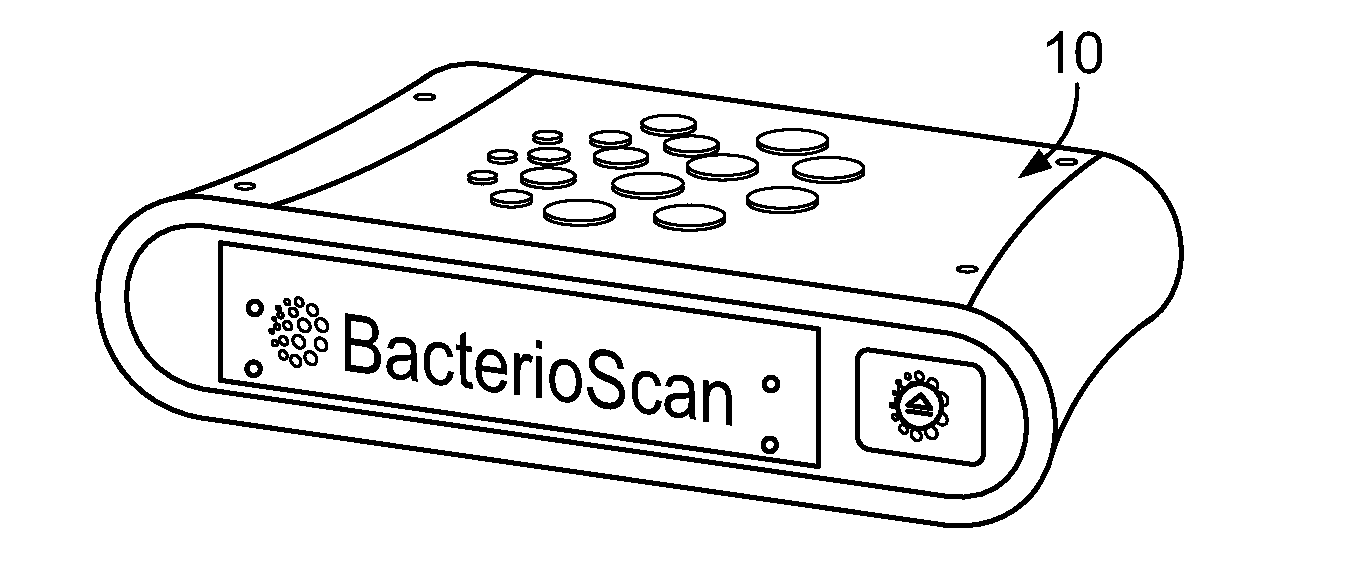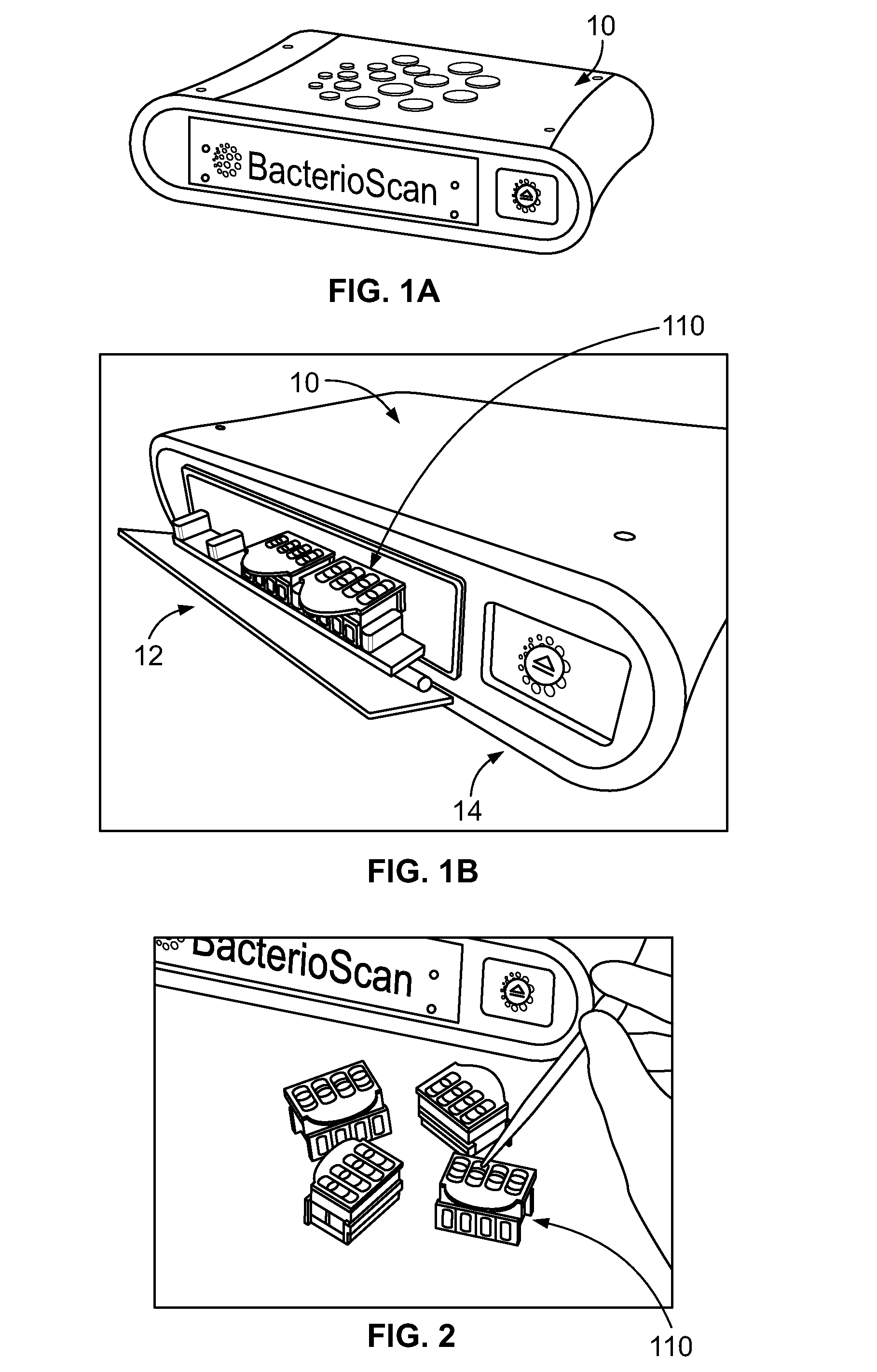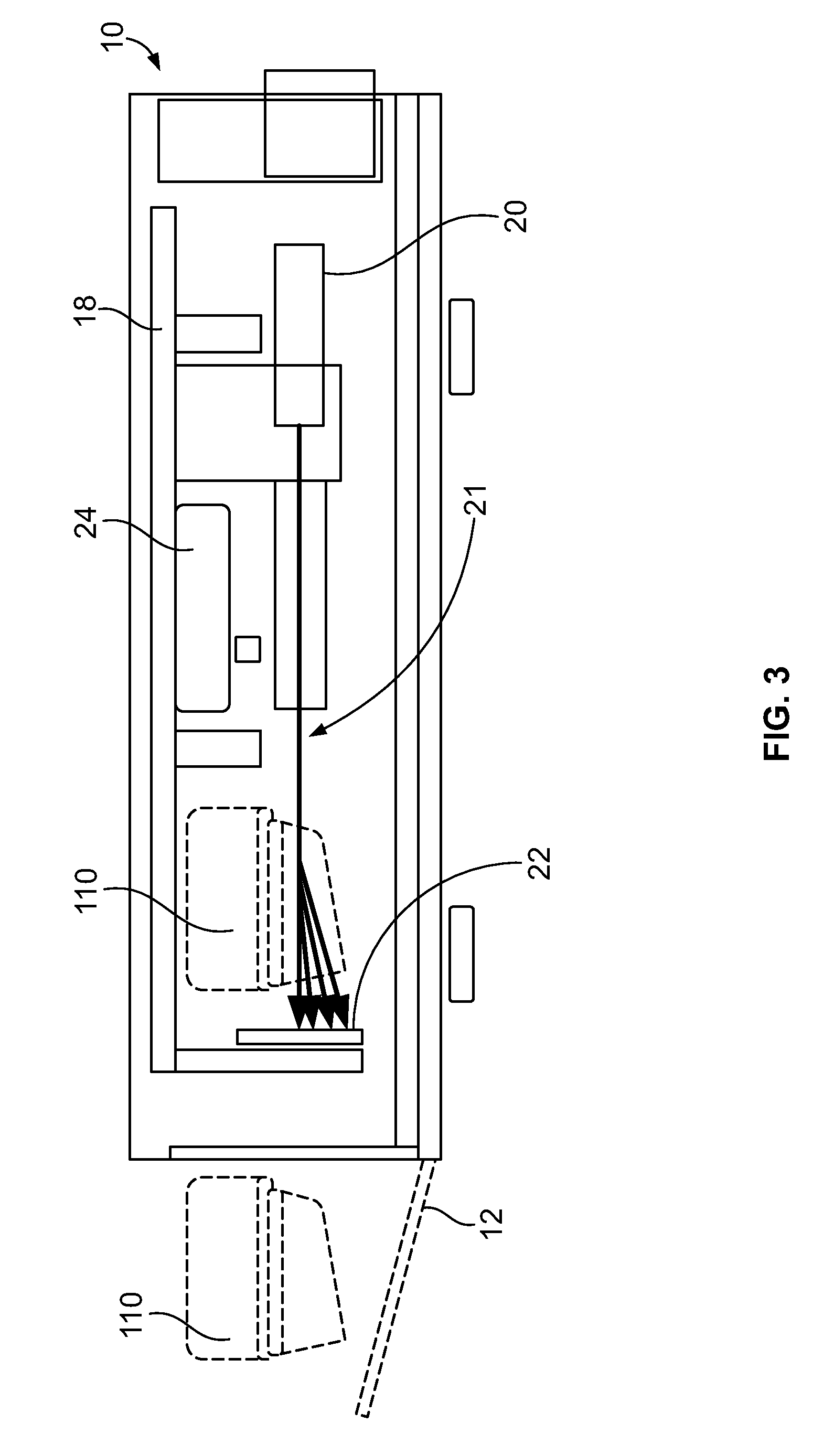System Using Laser-Scatter Measurement Instrument For Organism Identification And Related Network
a technology of organism identification and laser scattering, applied in the field of biological liquid sample measurement, can solve the problems of time-consuming culturing of bacteria, affecting the algorithms of instrument interpretation, and difficult implementation of the system, so as to reduce the burden of database and network design, operation, maintenance and use.
- Summary
- Abstract
- Description
- Claims
- Application Information
AI Technical Summary
Benefits of technology
Problems solved by technology
Method used
Image
Examples
example 1
[0102]The following information provides one exemplary test process in accordance to FIGS. 13-15, which is related to the use of e. coli ((ATCC25922):[0103]A freshly grown e. coli (ATCC25922) colony is diluted and placed in a Luria Broth (LB) to achieve a 1×104 CFU / ml concentration level. The 1×104 CFU / ml concentration level is the minimum bacteria concentration for indicating a urinary tract infection.[0104]Three ˜2 mL aliquots are loaded into three chambers of 4-chamber multi-cuvette (FIG. 2), and the fourth chamber was used for LB control to confirm sterility.[0105]Concentration curves are obtained on ˜2 minute intervals in a BacterioScan 216R instrument (FIG. 1), with samples heated to 37° C.[0106]When the sample concentration reaches 105, 106, 107 & 108 cfu / ml as detected by the BacterioScan 216R, (i) an aliquot of 1 μl is loaded onto MALDI-TOF device (“wet target”) and (ii) an aliquot of 1 ml is processed via a centrifuging / washing process into a pellet (“dry target”) having a...
PUM
 Login to View More
Login to View More Abstract
Description
Claims
Application Information
 Login to View More
Login to View More - R&D
- Intellectual Property
- Life Sciences
- Materials
- Tech Scout
- Unparalleled Data Quality
- Higher Quality Content
- 60% Fewer Hallucinations
Browse by: Latest US Patents, China's latest patents, Technical Efficacy Thesaurus, Application Domain, Technology Topic, Popular Technical Reports.
© 2025 PatSnap. All rights reserved.Legal|Privacy policy|Modern Slavery Act Transparency Statement|Sitemap|About US| Contact US: help@patsnap.com



